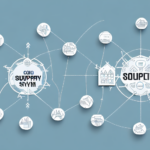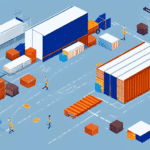Streamlining Your Freight Payment Process
As businesses strive to reduce operational costs and enhance efficiency, optimizing the freight payment process emerges as a critical, yet often overlooked, area. Streamlining this process not only improves the bottom line but also allocates valuable time and resources to other strategic initiatives.
Importance of Streamlining Freight Payment
The freight payment process is integral to supply chain management, involving the settlement of payments to carriers for transporting goods. Enhancing this process offers several advantages:
- Cost Reduction: Minimizing errors and enhancing efficiency can significantly lower operational costs.
- Improved Accuracy: Automation reduces manual errors, ensuring precise payments.
- Time Efficiency: Streamlined processes free up time for staff to focus on strategic tasks.
According to a Supply Chain Digital report, companies that implement automated freight payment processes can reduce their payment processing time by up to 50%.
Enhanced Visibility and Control
Automating the freight payment process provides real-time insights into freight expenditures, carrier performance, and other key metrics. This visibility allows businesses to make data-driven decisions, optimizing their supply chain operations for maximum efficiency and profitability.
Challenges in Freight Payment Processing
Freight payment processing is often fraught with complexities, including:
- Invoice Management: Handling numerous invoices from various carriers can be overwhelming.
- Payment Tracking: Ensuring timely and accurate payments requires meticulous tracking.
- Dispute Resolution: Addressing discrepancies and disputes can delay payments and increase costs.
The lack of standardization across the industry exacerbates these challenges. Each carrier may have unique invoicing and payment protocols, leading to potential confusion and errors. This necessitates additional resources to manage these complexities, further escalating costs and processing times.
Impact of Manual Processes
Manual freight payment processes are not only time-consuming but also prone to errors. According to a study by The New York Times, businesses using manual systems experience a 20% higher error rate in payments compared to those utilizing automated solutions.
Benefits of Automating Freight Payment
Implementing an automated freight payment system offers numerous benefits:
- Error Reduction: Automation minimizes manual errors, ensuring accurate payments.
- Faster Processing: Automated systems can handle payments more swiftly than manual processes.
- Cost Savings: Reducing errors and processing times translates to significant cost savings.
- Improved Carrier Relationships: Timely and accurate payments build trust with carriers, leading to better rates and service.
Cost Optimization
Automated systems enable businesses to identify cost-saving opportunities, such as negotiating favorable rates with carriers or optimizing shipping routes. A report by Gartner highlights that companies leveraging automation in freight payments can achieve up to a 15% reduction in transportation costs.
Enhanced Supplier Relationships
Accurate and timely payments foster strong relationships with carriers and suppliers. This reliability can result in improved service levels, preferential rates, and collaborative growth opportunities.
Selecting the Right Freight Payment Solution
Choosing an appropriate freight payment solution involves assessing several factors:
- Scalability: Ensure the solution can grow with your business needs.
- Integration: The system should seamlessly integrate with existing ERP and supply chain management tools.
- Automation Capabilities: Look for features that automate invoice management, payment processing, and dispute resolution.
- Customer Support: Reliable and responsive support is crucial for addressing any issues promptly.
- Security: Robust security measures, including data encryption and secure storage, are essential to protect sensitive financial information.
According to Forrester's 2023 report, top freight payment solutions offer comprehensive automation features, strong integration capabilities, and exceptional customer support, making them ideal choices for businesses aiming to optimize their payment processes.
Evaluating ROI
When selecting a freight payment solution, consider the return on investment (ROI). Assess both the upfront costs of implementation and the long-term savings from reduced errors and increased efficiency. A McKinsey report indicates that businesses can expect a positive ROI within the first year of implementing automated freight payment systems.
Cost Savings and ROI
Streamlining the freight payment process can lead to substantial cost savings:
- Labor Cost Reduction: Automation reduces the need for manual intervention, lowering labor costs.
- Fewer Errors: Minimizing errors decreases the costs associated with chargebacks and dispute resolutions.
- Improved Cash Flow: Efficient payment processing enhances cash flow management, enabling better financial planning.
By leveraging data analytics, businesses can further optimize their freight payment processes. An analysis by PwC shows that companies utilizing advanced data analytics in their freight payment processes can achieve up to a 10% improvement in operational efficiency.
Long-Term Financial Benefits
Investing in streamlined freight payment processes not only offers immediate cost reductions but also fosters long-term financial health by enabling more accurate budgeting and forecasting.
Best Practices for Implementation
Successful implementation of a new freight payment system involves adhering to several best practices:
- Define Clear Objectives: Establish specific goals for what the new system should achieve, such as reducing payment errors or decreasing processing time.
- Engage Stakeholders: Involve representatives from different departments to ensure the system meets all organizational needs.
- Thorough Testing: Conduct comprehensive testing before full-scale deployment to identify and rectify any issues.
- Employee Training: Provide adequate training to employees to ensure they are proficient in using the new system.
Additionally, forming a dedicated project team with members from various departments can facilitate a smoother implementation process. According to Harvard Business Review, cross-functional teams are instrumental in addressing diverse challenges during implementation.
Continuous Improvement
Post-implementation, continuously monitor the system's performance and seek feedback from users to identify areas for further improvement. Regular updates and upgrades can help maintain the system's effectiveness and adapt to evolving business needs.
Future Trends in Freight Payment Processing
Staying abreast of emerging trends can position businesses for sustained success in freight payment processing:
- Increased Automation: The adoption of AI and machine learning continues to enhance the efficiency and accuracy of freight payments.
- Blockchain Integration: Blockchain technology offers enhanced transparency and security in payment transactions.
- Mobile Solutions: The growth of mobile applications enables on-the-go access and management of freight payments.
- Extended Data Analytics: Advanced analytics provide deeper insights into freight spend and carrier performance.
According to a TechRepublic report, the integration of blockchain and AI in freight payment systems is expected to revolutionize the industry by providing unparalleled transparency and predictive capabilities.
Adapting to Regulatory Changes
As regulations evolve, automated freight payment systems must adapt to ensure compliance. Staying informed about regulatory updates and integrating compliance checks within the payment process can prevent potential legal issues and penalties.
Conclusion
Optimizing the freight payment process is a strategic move that can yield significant benefits, including cost savings, enhanced efficiency, and improved supplier relationships. By embracing automation, leveraging data analytics, and adhering to best practices, businesses can transform their freight payment operations. Staying informed about future trends and continuously refining processes will ensure sustained success and competitiveness in the dynamic landscape of supply chain management.




















